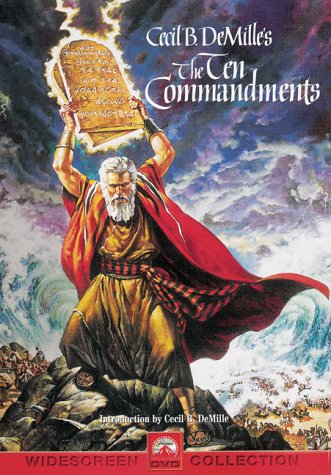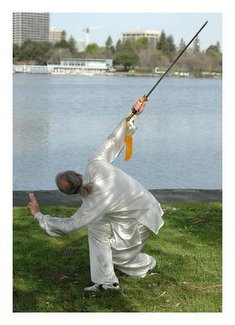(Cross-posted at God is for Suckers)
I have discussed the Inquisition elsewhere, but this obscure, little-known chapter deserves far more press than it receives. It serves as a reminder to those missionaries who seek to spread the ‘good news’: sometimes the tidings you bring wreck cultures, and become flotsam and jetsam in the river of history.
This one, however, wasn’t predicated on the I Samuel 12 verse (consultation with a sorceress), but instead on one of the Ten Commandments: specifically number two of the Hebrew version, number one of the Catholic, etc.
Goa is a small state on the West coast of India, a lovely vacation spot, whose history is as rich in content as its landscape is lovely:
”Goa has a long history stretching back to the 3rd century BCE, when it formed part of the Mauryan empire. It was later ruled by the Satavahanas of Kolhapur at the beginning of the Common Era and eventually passed to the Chalukyans of Badami, who controlled it from 580 to 750. Over the next few centuries it was ruled successively by the Silharas, the Kadambas and the Chalukyans of Kalyani. The Kadambas are credited with constructing the first settlement on the site of Old Goa in the middle of the 11th century, when it was called Thorlem Gorem.
Goa fell to the Muslim Sultanate of Delhi for the first time in 1312, but they were forced to evacuate it in 1370 by Harihara I of the Vijayanagar empire whose capital was at Hampi in Karnataka state. The Vijayanagar rulers held on to Goa for nearly 100 years, during which its harbours were important landing places for Arabian horses on their way to Hampi to strengthen the Vijaynagar cavalry. In 1469, however, Goa was reconquered, this time by the Bahmani Sultans of Gulbarga. When this dynasty broke up, the area passed to Adil Shahis of Bijapur, who made Goa Velhaa their second capital. The present Secretariat building in Panaji is a former Adil Shahi palace, later taken over by the Portuguese Viceroys as their official residence.”
Subsequently, the Portuguese came, bearing gifts and crosses, and pincered between the Eurocentric perspective and Judeo-Christian ethic they brought, this Hindi oasis became a hellhole ravaged, rarely equaled in the long appalling history of European colonialism.
From 1560 to 1812 (with a brief lapse of four years, 1774-78), the ‘good news’ was spread in an appalling manner:
“Persecution of Hindus
"The condemned Hindus were publicly burned at the stake in the square outside the Sé Cathedral in batches during ceremonies known as auto da fé (Portuguese: act of faith). Those who confessed to their accused heresy would be strangled prior to the burning.
Brahmins were nailed to crosses and beheaded by the Portuguese to spread fear into the local populations. Hindus were slaughtered by the dozens by the marauding Portuguese armies and Catholic priests.
"A large number of restrictive religious laws were enacted, including the banning of Hindu musical instruments, dhoti, betel leaves and cholis. Many Hindu temples were converted or destroyed, and Christian churches built in their place, often from the materials of the temples they replaced. Throughout this period several important Hindu texts were burned in an effort to saturate the area with Christian religious texts. Most notably, the Kama Sutra increased in infamy with its "lewd" alternatives to the endorsed Missionary position.
"The Portuguese let out their Negro slaves into the streets and as soon as they found a Hindu, they smeared the person's mouth with beef, making them untouchable in the eyes of other Hindus. Then they forcefully converted them.[1]
"People who were accused of heresy (not all of these were Hindus, though they were the majority) were subjected to gruesome punishment generally done in secret. "Pagans" were flogged, interrogated, and dismembered in front of relatives. The Portuguese's studies in anatomy enabled them to chop off limbs from people while they were still alive, even if all that was remaining was the torso attached to the head[2].”
Not content with the indigenous religion, the madness spread towards anyone who didn’t hold with the Holy See:
”Persecution of Muslims
The large Muslim population of Goa, was massacred and decimated by the Jesuits[3].
Persecution of Jews
There was a large population of Jews in the Konkan region. Celebrating the Jewish Sabbath was enough to get a person burned at the stake[4].
The Jewish presence in the South Indian state of Kerala has been notable. In the 16th century, the Portuguese massacre of South Indian Jewry led to a significant decline in Jewish settlements in the region. Eventually, they sought refuge with the Hindu King of Cochin. In a letter written by the Portuguese to their king in 1513 permission is sought for their extermination. The Portuguese destroyed the remnants of the Jewish population in Kodungallore. They also destroyed the Jewish settlement in Cochin and damaged the Jewish synagogue as well as their historical documents.
"In AD 1662 the Dutch attacked Cochin but were driven out. The Jews were severely punished by the Portuguese for allegedly aiding the Dutch. In AD 1663 the Dutch returned and defeated the Portuguese. The Jews were treated more tolerantly by the Dutch rulers. The Cochin Jews reestablished their links with European Jews. In 1687 a Jewish delegation from Amsterdam arrived under the leadership of Mr. Thomas Perera. His report published in 1687 under the name "NOTSIAS DOS JUDEOS DE COCHIM " details the history of Cochin Jews.[2].”
And, alas, among their own ilk:”Persecution of Christians (non-Catholic)
"In 1599 under Aleixo de Menezes the Synod of Diamper converted the Syriac Saint Thomas Christians to the Roman Catholic Church. The synod enforced severe restrictions on their faith and practice of using Syriac/Aramaic. Those Kerala Nasrani who resisted the conversion to Latin rite faced persecution.
The Portuguese through the Inquisition drove both the Syrian Christians and Jews to the interiors of the Kerala.What was unbearable for the Syrian Christian was the interference on his freedom. A synod of Diamper was convened where we find that the Arch deacon and the prelates were forced to sign the instrument of loyalty to Rome.There is a saying that these priests were held at sword end and any one who refused was killed immediately. The churches where razed to the ground or the altar was pulled down to meet catholic criteria. The Syrian church of malabar remained under the persecutory rule of the Portuguese Catholics for 60 yrs.”
"During the past few centuries the most belligerent, the most aggressive, the most rapacious, the most power-drunk section of humanity has been precisely, the Christian Western world. During these centuries western Christendom had invaded all other continents; its armies followed by priests and merchants have subjugated, robbed or pillaged most of the non-Christians. Native Americans, African, Australian, Asiatic populations have been subjugated to this peculiar brand of Christian "love" which has generally manifested itself in pitiless destruction, enslavement, coercion, destruction of the cultural values, institutions, the way of life of the victims and the spread of alcoholism, venereal disease, commercial cynicism and the like." - Pitirim A. Sorokin
And for more horrors perpetrated in the name of the ‘prince of peace’:
”The Archbishop living on the banks of the Ethora had said during one of his lecture series, "The post of Inquiry Commission in Goa is regarded as holy." The women who opposed the assistants of the commission were put behind the bars and were used by them to satisfy their animal instincts. Then they were burnt alive as opponents of the established tenets of the Catholic Church.The victims of such inhuman laws of the Inquiry Commission included a French traveler named Delone. He was an eyewitness to the atrocities, cruelty and reign of terror unleashed by priests. He published a book in 1687 describing the lot of helpless victims. While he was in jail he had heard the cries of tortured people beaten with instruments having sharp teeth. All these details are noted in Delone's book.So harsh and notorious was the inquisition in Goa that word of its brutality and horrors reached Lisbon but nothing was done to stop this notoriety and escalating barbarity and it continued for two hundred more years. No body knows the exact number of Goans subjected to these diabolical tortures, but perhaps it runs into hundreds of thousands, may be even more. The abominations of inquisitions continued until a brief respite was given in 1774 but four years later, the inquisition was introduced again and it continued un-interruptedly until 1812. At that point in time, in the year of 1812, the British put pressure on the Portuguese to put an end to the terror of Inquisition and the presence of British troops in Goa enforced the British desire. Also the Portuguese power at this time was declining and they could not fight the British. The palace of the Grand Inquisitor, the Big House, was demolished and no trace of it remains today, which might remind someone of inquisitions and the horrors inside this Big House that their great saint Francis Xavier had commenced.”
It seems that ‘Saint’ Xavier actually supplanted Torquemanda in not only body count, but numbers as well as an ongoing, bloody legacy for nigh well two and a –half centuries.
There were monsters and madmen aplenty in those days, but Xavier stood the tallest: let his name ring out in infamy – his memory exhumed from the bloody shadows of forgotten history.
Another lost chapter in that realtime Necronomicon – the bible. More pages written on human skin, the quill dipped in blood.
‘Tis a good thing I believe not in ghosts – or I’d imagine hearing the ghastly cries carried on the winds of the ages.














No comments:
Post a Comment